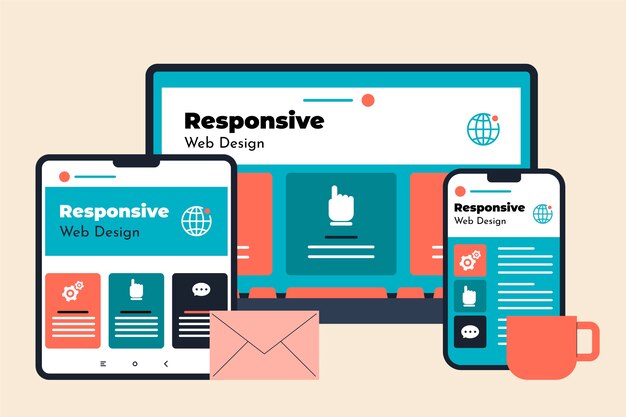Website development is an ever-evolving field, driven by advancements in technology and changing user expectations. As we move further into the digital era, businesses and developers must stay ahead of emerging trends to create efficient, secure, and engaging web experiences. Here are some key trends shaping the future of website development.
1. Artificial Intelligence (AI) and Machine Learning (ML)
AI and ML are transforming website development by enabling automation, personalized experiences, and improved efficiency. AI-powered chatbots and virtual assistants enhance customer interactions, while machine learning algorithms analyze user behavior to deliver personalized content and recommendations. AI-driven development tools also help automate coding, testing, and debugging processes, making development faster and more efficient.
2. Progressive Web Apps (PWAs)
Progressive Web Apps are hybrid applications that combine the best features of web and mobile apps. They provide a seamless experience across devices, offering faster load times, offline functionality, and push notifications. PWAs eliminate the need for separate mobile applications, making them a cost-effective and efficient solution for businesses looking to enhance user engagement and accessibility.
3. Voice Search Optimization
With the rise of smart speakers and voice assistants like Alexa, Google Assistant, and Siri, voice search optimization is becoming crucial. Websites must adapt to voice-based queries by optimizing for natural language processing (NLP), long-tail keywords, and conversational search patterns. This trend will require developers to rethink SEO strategies and ensure websites are accessible via voice commands.
4. No-Code and Low-Code Development
No-code and low-code platforms are revolutionizing website development by enabling non-technical users to build websites and applications with minimal coding knowledge. These platforms use visual drag-and-drop interfaces, reducing development time and costs. While professional developers will still be needed for complex projects, no-code solutions democratize web development and empower more businesses to create functional online experiences.
5. Blockchain Technology
Blockchain is making its way into website development, particularly in areas such as secure transactions, data protection, and decentralized applications (DApps). Blockchain enhances security by preventing data tampering and enabling transparent and immutable record-keeping. As concerns over data privacy and cybersecurity grow, blockchain-based solutions will become more prevalent in web development.
6. Augmented Reality (AR) and Virtual Reality (VR) Integration
AR and VR technologies are enhancing user experiences by providing interactive and immersive content. E-commerce websites, real estate platforms, and education portals are increasingly adopting AR/VR to offer virtual try-ons, property tours, and 3D learning experiences. As technology advances, we can expect more websites to integrate AR/VR for better engagement and interaction.
7. Cybersecurity and Privacy Enhancements
With the increasing frequency of cyberattacks and data breaches, website security is a top priority. Developers are implementing stronger encryption methods, multi-factor authentication, and secure coding practices to protect user data. Compliance with privacy regulations such as GDPR and CCPA will continue to shape web development, ensuring user data is handled responsibly.
8. Motion UI and Micro-Interactions
Modern websites are focusing on user engagement through visually appealing interfaces and micro-interactions. Motion UI elements, such as animated transitions and hover effects, create a more interactive and enjoyable browsing experience. Subtle animations improve usability by providing feedback and guiding users through the site seamlessly.
9. Edge Computing and Serverless Architecture
Edge computing reduces latency by processing data closer to the user rather than relying solely on centralized cloud servers. This improves website performance and speeds up loading times. Serverless architecture is also gaining traction, allowing developers to build and run applications without managing infrastructure. This approach enhances scalability, reduces costs, and improves efficiency.
10. Dark Mode and Adaptive Design
Dark mode has become a popular design trend, providing users with a visually comfortable browsing experience, especially in low-light conditions. Adaptive design ensures that websites automatically adjust to different screen sizes, resolutions, and user preferences. As users demand more customization options, web developers will focus on creating adaptable and user-friendly interfaces.
11. 5G Technology and Faster Web Performance
The rollout of 5G networks will significantly impact website development by providing faster internet speeds and lower latency. This will enable richer multimedia content, seamless streaming, and improved real-time interactions. Developers will need to optimize websites for high-speed connectivity while ensuring efficient data usage for mobile users.
12. Sustainability in Web Development
With growing concerns about environmental impact, sustainable web development is gaining attention. Developers are focusing on optimizing code, reducing server energy consumption, and adopting green hosting solutions. By creating energy-efficient websites, businesses can contribute to sustainability while improving performance and user experience.
Conclusion
The future of website development is dynamic and full of exciting possibilities. As technology advances, developers must embrace these trends to create websites that are fast, secure, engaging, and user-friendly. Staying informed about emerging innovations will help businesses remain competitive and provide exceptional digital experiences to their audiences. Whether through AI, PWAs, voice search, or blockchain, the next generation of web development promises to be more intelligent, efficient, and immersive than ever before.




